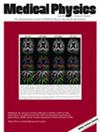A database of magnetic resonance imaging-transcranial ultrasound co-registration
Abstract
Purpose
As a portable and cost-effective imaging modality with better accessibility than Magnetic Resonance Imaging (MRI), transcranial sonography (TCS) has demonstrated its flexibility and potential utility in various clinical diagnostic applications, including Parkinson's disease and cerebrovascular conditions. To better understand the information in TCS for data analysis and acquisition, MRI can provide guidance for efficient imaging with neuronavigation systems and the confirmation of disease-related abnormality. In these cases, MRI-TCS co-registration is crucial, but relevant public databases are scarce to help develop the related algorithms and software systems.
Acquisition and validation methods
This dataset comprises manually registered MRI and transcranial ultrasound volumes from eight healthy subjects. Three raters manually registered each subject's scans, based on visual inspection of image feature correspondence. Average transformation matrices were computed from all raters' alignments for each subject. Inter- and intra-rater variability in the transformations conducted by raters are presented to validate the accuracy and consistency of manual registration. In addition, a population-averaged MRI brain vascular atlas is provided to facilitate the development of computer-assisted TCS acquisition software.
Data format and usage notes
The dataset is provided in both NIFTI and MINC formats and is publicly available on the OSF data repository: https://osf.io/zdcjb/.
Potential applications
This dataset provides the first public resource for the development and assessment of MRI-TCS registration with manual ground truths, as well as resources for establishing neuronavigation software in data acquisition and analysis of TCS. These technical advancements could greatly boost TCS as an imaging tool for clinical applications in the diagnosis of neurological conditions such as Parkinson's disease and cerebrovascular disorders.


 求助内容:
求助内容: 应助结果提醒方式:
应助结果提醒方式:


